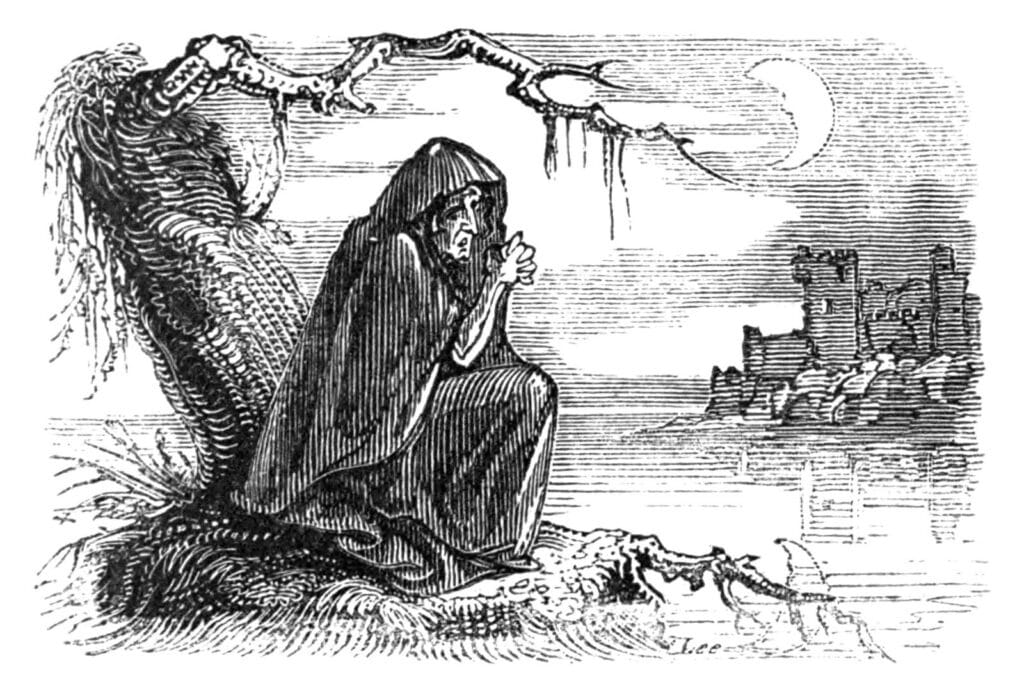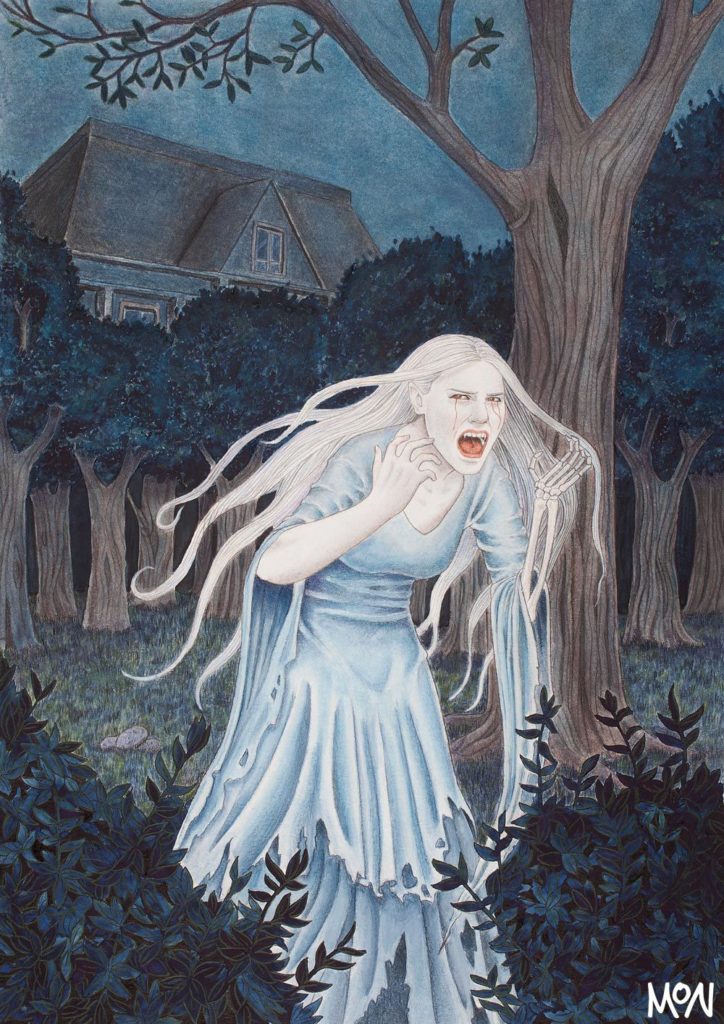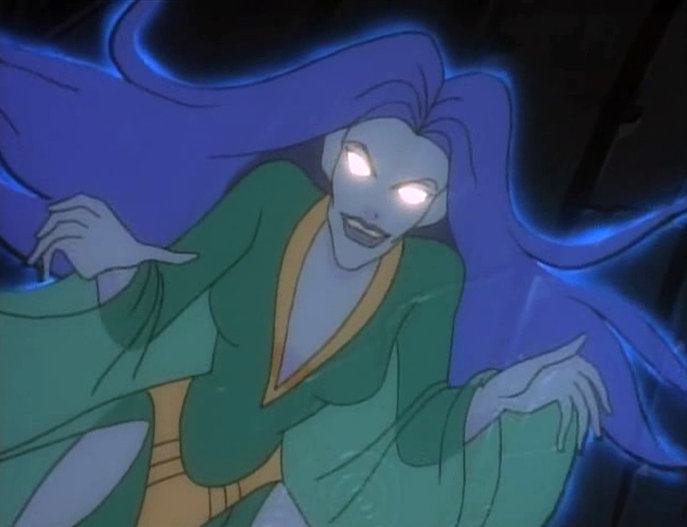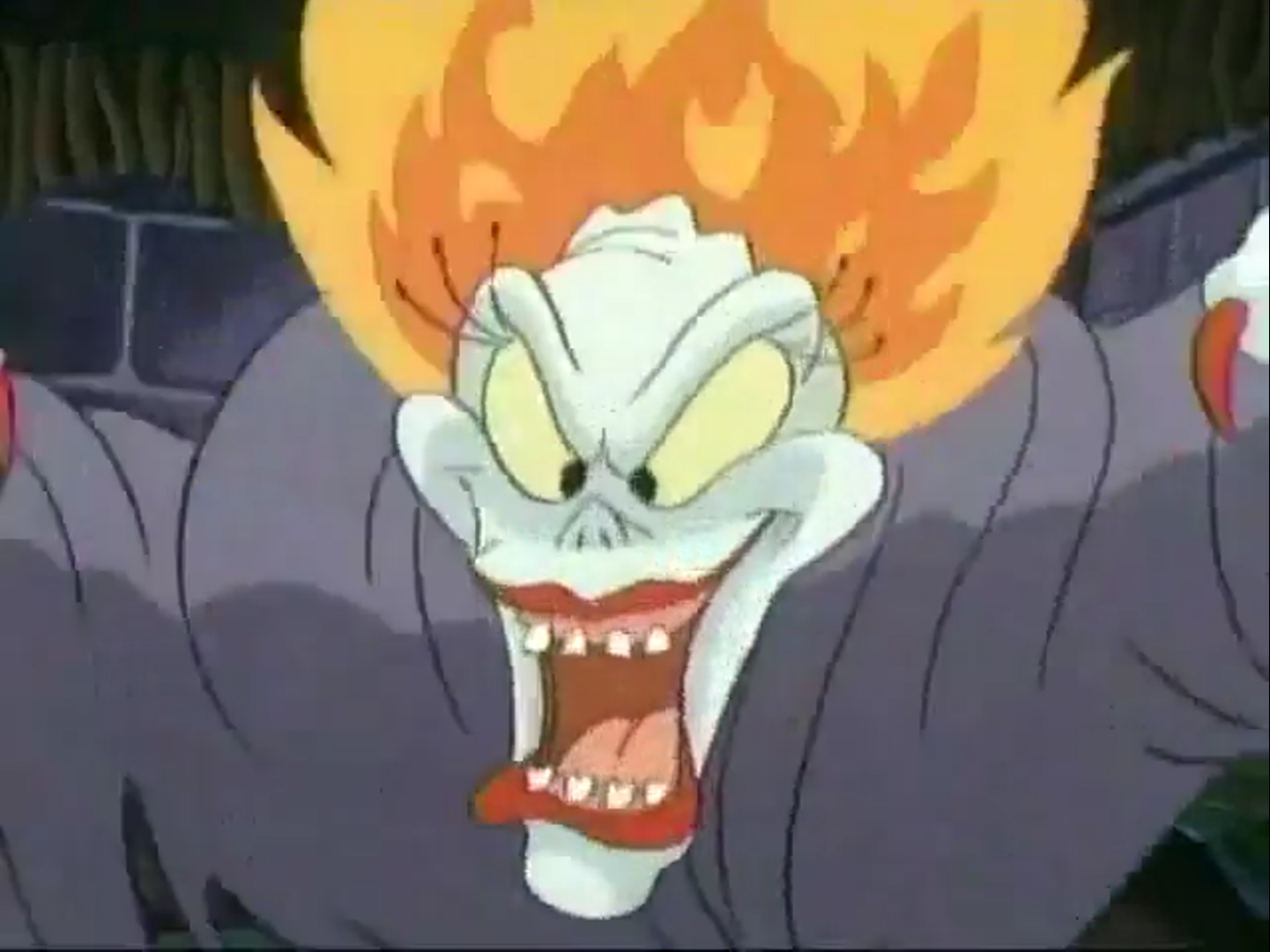Listen to the Banshee (original) (raw)

I’m not sure I’ve ever done a post about Banshees, of Inisherin or otherwise. I haven’t seen that movie, but I suspect it doesn’t have any literal Banshees in it. I did write before about the Bean-Nighe, which is sometimes considered a type of Banshee, or at least related to them. Basically just meaning “fairy mound woman” or just “fairy woman,” the Banshee is probably the second most common Irish mythical being in pop culture, to, of course, Leprechauns. The most famous thing about Banshees is that they’re supposed to wail when someone nearby is about to die.
Some versions of the legend say they only appear to the oldest Irish families, those of Milesian descent. As such, they tend to attach themselves to specific households. But there’s a lot of variety in accounts of Banshees. The terrifying floating woman in a cloak is a common depiction, but other times they’re seen as beautiful or just normal-looking women.
Picture by Henry Meynell Rheam
They’re also usually regarded as small, but other times as noticeably tall. Other typical features include long, pale hair on which they use silver combs, and red eyes from all their weeping.
Picture by John White
Sometimes they also take the forms of animals, including crows, stoats, hares, and weasels. Their cries also vary depending on whether or not they have good feelings toward the family, so sometimes it’s a sweet lament and other times the better-known shriek. Websites relate the Banshee’s wails to the traditional Irish practice of keening, when a professional mourner would sing a song of lament at a funeral. Whether the keening or the Banshee stories came first, however, isn’t clear.
Picture by Michelle Monique
So is a Banshee a fairy or a ghost? The world of the fairies and that of the dead are so often combined that I suppose they could be either or both. When ghosts, they are sometimes thought to be the spirit of someone in the family they’re attached to. There’s also overlap between fairies and gods. Apparently there are stories of the goddess Brigid being the originator of keening, when she mourned her son Ruadan, who died in battle.
Picture by Seamus Draoigall
They’re also sometimes associated with the Morrigan, although that connection seems a little more tenuous, being mostly based on how they’re both associated with death. But it does seem to be pretty consistent that Banshees only foretell death and don’t cause it, which makes them pretty nice relative to a lot of ghosts or fairies in traditional folklore.

Picture by Tammy Wampler
Cliodhna, a very attractive fairy woman, perhaps the most beautiful, was sometimes said to be the Queen of the Banshees, or at least the ones in Munster. She was the daughter of Gebann, the Red Druid who served the sea god Manannan Mac Lir. The rock Cairrigcleena and Tonn Cliodhna, the dangerous tide in Glandore, are both named after her. The former is said to mark a portal to her home in the otherworld. The story of why the waves bear her name is that she fell in love with a mortal man named Ciabhan and left her fairy home to be with him. When he was out hunting, she stayed on a beach, and Manannan, who apparently had feelings for her himself, sent a musician to lull her to sleep with music, then a wave to drown her. It presumably didn’t kill her, though, or at least the death wasn’t permanent, because she later prophesied that a wave would eventually destroy all of Munster. It’s sometimes specified that the Tonn Cliodhna is the ninth wave in sequence. Another story involves her and her sister Aoibheall being rivals for the love of a chieftain named O’Caoimh. Cliodhna turned her sister into a cat. The name Aoibheall is pronounced pretty similarly to “evil,” although it probably actually means “beauty” or “desire.” Other tales say that Cliodhna drowned men like a Siren, and kidnapped a prince named Sean Mac Seamas and trapped him in her fairy home. Fortunately for him, he was able to write a note in his own blood, which led to his rescue. In other cases, though, she seems to have been quite beneficent. That’s deities for you, I suppose.
Picture by Artstain
In the fifteenth century, when Cormac MacCarthy was rebuilding Blarney Castle, there was a lawsuit that threatened the project. He appealed to Cliodhna, who told him to kiss the first stone he saw. When he did, it gave him the eloquence to easily win the case. So he incorporated the stone into the castle instead of just tossing it in a pile of Blarney rubble, and that’s the origin of that. Cliodhna is said to have three birds that can heal with their songs.
Picture by Shelly Mooney
In popular culture, Banshees are often featured alongside Leprechauns, as they’re the two sorts of Irish mythical being audiences are likely able to recognize. I know a lot of people were struck by the Banshee in Darby O’Gill and the Little People, although I mostly just remember that movie being really long.
There are a few Banshees in Terry Pratchett’s Discworld books. Moving Pictures introduces Mr. Ixolite, a Banshee who has a speech impediment, so he writes his wail on paper and slips in under doors. He’s said to be the last surviving Banshee, but that doesn’t always mean much in a long-running series. Hrun said in The Colour of Magic that swamp dragons are extinct, but Lady Sybil has a sanctuary for them in Guards! Guards! In Going Postal, there’s a Banshee named Gryle, who works as an assassin.
In his case, he doesn’t just warn of death, but does the killing himself. It’s interesting that both of these characters are male, when Banshees are generally said to be exclusively female. But then, Pratchett also gave us male Dryads and the whole issue with Dwarfs and gender. I don’t think there are any Leprechauns on Discworld, although the gnomes have some similarities. In a much more obscure source that’s relevant to my interests, Mark Haas’s Leprechauns in Oz has as its main villain a lonely Banshee named Clio, whose crying has been tormenting the Leprechauns of Burzee.
I also remember a Banshee in Gargoyles whose voice was actively dangerous, and one in Tiny Toon Adventures who has a Medusa-like ability to turn people (or pigs) to stone.

I wonder why there isn’t a Banshee-themed cereal as a counterpart to Lucky Charms. Maybe it could be called Wailing Wheats, or Keening Krunchies.
This entry was posted in Animals, Authors, Cartoons, Celtic, Characters, Discworld, Etymology, Magic, Monsters, Music, Mythology, Oz, Television, Terry Pratchett and tagged aiobheall, banshees, bean-nighe, birds, blarney castle, blarney stone, brigid, carrigcleena, cats, ciabhan, cliodhna, cormac maccarthy, crows, dragons, dryads, dwarves, fairies, forest of burzee, funerary rites, gargoyles, gebann the red druid, ghosts, gnomes, going postal, gryle, guards! guards!, hares, keening, leprechauns, leprechauns in oz, manannan mac lir, mark haas, morrigan, moving pictures, mr. ixolite, o'caoimh, ruadan, sean mac seamas, sirens, stoats, the colour of magic, tiny toon adventures, tonn cliodhna, tuatha de danann, weasels. Bookmark the permalink.